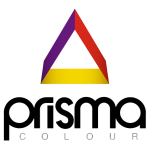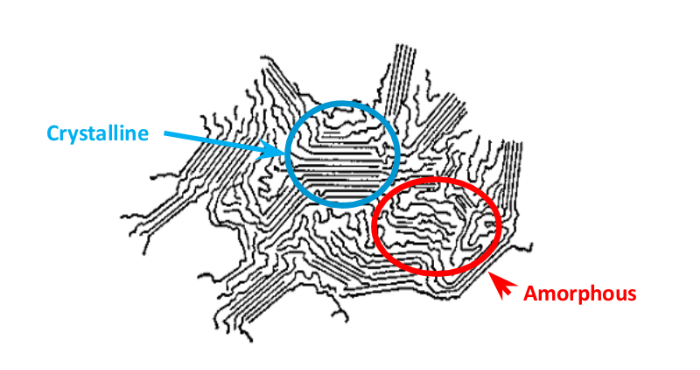
What is Dimensional stability
Warpage and distortion is often a big problem in injection moulded HDPE in particular. It is inherent due mainly to rearrangement of the polymer chains into a partially crystalline matrix, requiring less space than the molten polymer.
Other olefinic polymers also exhibit this crystallization, but the resultant distortion is not so nearly as pronounced. In the case of PP, the crystallisation rate is considerably slower than HDPE, allowing realignment of the matrix. With LDPE, the degree of crystallisation is lower still resulting in less shrinkage, warping or distortion of the article.
The choice of colourants used in formulations may influence the crystallisation of polyolefin polymers, which may manifest itself in dimensional instability – commonly referred to as warpage. This may more precisely be due to shrinkage of the part being made.
The design of the part may have taken into account the specification of the host polymer from the outset, so that intricate parts fit together perfectly or that the lid of a bin sits flat. However, it is known that certain types of pigment may induce warping or shrinkage.
Here at Prisma Colour we also are aware that how they have been manufactured, the surface treatment used and how colourants are subsequently processed, may adversely affect the article
Experience has shown that inorganic pigments do not have a significant effect on shrinkage of polyolefins but that most organic pigments do have some effect. The theory behind this, is that the pigment interferes with the nucleation of the polymer as it cools, causing a modified crystal structure. For relatively large articles with a central gate, such as a lid or complex articles such as crates, the different shrinkage values result in considerable internal stress forces in the moulding.
These stress forces then manifest as distortion, warping and even cracks.
Example of cracking in application as a result of the effects of warpage.
The technical team at Prisma Colour can help you in your design stage, through our many years of experience working with all colourant types and not being tied to any one supplier. With the correct selection of materials during the colour formulation, we will create the right product for your needs to ensure your product is within tolerances.
Where the application would be adversely affected should distortion or warpage occur, pigments can be chosen that have been tested by the suppliers demonstrating low or no warping tendency.
Possible tests to demonstrate these effects:
Injection at one end of a long, slim moulding produce longitudinal flow, where the shrinkage may be noted as a difference in length (parallel to flow lines) and a difference over the width (perpendicular to the flow lines); relative to the mould dimensions.
Warping into the design of a ‘bike saddle’.
Warping behaviour maybe noted in a 2nd test; an injection moulded disc with a central gate only. This shows radial flow and where dimensional instability occurs, a ‘traditional Chinese hat’ type effect is observed – due to the circumference now being too short; or a ‘bike saddle’ effect where the circumference has become too long.
If you’re having technical issues with your mouldings, contact us at Prisma Colour for the best possible colour masterbatch.




Sprunki Incredibox adds a fresh twist to music mixing fun with new beats and visuals. It’s a great pick for fans of Casual Games who love creativity and easy play.
Solid article! Thinking about bankroll management & game selection is key to long-term success. Seeing platforms like windream game offer diverse options is great for finding your edge. Focus on solid fundamentals!
Baccarat strategy is fascinating – understanding patterns is key, but responsible play always comes first! Seeing platforms like arionplay legit prioritize secure logins & legit environments is a big plus for players in Asia. Good to see a focus on a smooth experience!
Just tried Sprunki Incredibox and loved the fresh beats and visuals! It’s a fun twist on the original with more creative freedom. If you like music games, check out IO Games for more cool picks!
It’s great seeing platforms prioritize a smooth, secure experience – essential for enjoying games responsibly. The curated selection at arionplay app sounds fantastic, and that structured onboarding is a smart move for player wellbeing! 👍
Online casinos are evolving so fast! Seeing platforms like PhlBoss cater specifically to Filipino players is great. Easy deposit options like GCash are a huge plus! Check out phlboss slot download for a localized experience – exciting games and fair play seem to be their focus. 👍
Thank you for your sharing. I am worried that I lack creative ideas. It is your article that makes me full of hope. Thank you. But, I have a question, can you help me?
Хочешь развлечься? купить мефедрон федерация – это проводник в мир покупки запрещенных товаров, можно купить гашиш, купить мефедрон, купить кокаин, купить меф, купить экстази, купить альфа пвп, купить гаш в различных городах. Москва, Санкт-Петербург, Краснодар, Владивосток, Красноярск, Норильск, Екатеринбург, Мск, СПБ, Хабаровск, Новосибирск, Казань и еще 100+ городов.
бонуси в казино казино з бонусами
Thanks for sharing. I read many of your blog posts, cool, your blog is very good. https://accounts.binance.com/register-person?ref=IHJUI7TF
Took a peek at ZX88COM. It’s a solid option. Nothing that really blew me away, but it does the job. If you’re looking for something reliable, give it a whirl. Check it out: zx88com
GGWin, eh? Signed up yesterday. Layout is decent and found a few good bets. Withdrawals were prompt, which is always a good sign. Could use some more promotions though. Worth a look see. ggwin
новости беларуси 2025 самые свежие новости беларуси
Альтернативный kra49 домен работает как резервная точка входа на площадку при блокировках основных адресов провайдерами интернета и государственными органами.
Free video chat click here find people from all over the world in seconds. Anonymous, no registration or SMS required. A convenient alternative to Omegle: minimal settings, maximum live communication right in your browser, at home or on the go, without unnecessary ads.
Current Updates: https://pbase.com/npprteamshopz1
¿Quién no ama un buen bono? Bono777 suena prometedor. Si buscas promociones y ofertas, este sitio podría tener lo que necesitas. Exploren bono777 para ver qué tal.
More Details: http://storemango.com/bbs/board.php?bo_table=free&wr_id=3505494
What’s up to all, how is all, I think every one
is getting more from this web site, and your views are good designed for
new visitors.
Hello everyone, it’s my first pay a visit at this site, and article is
genuinely fruitful in support of me, keep up posting these content.
Hi, I do believe this is an excellent site. I stumbledupon it 😉 I am going to revisit yet again since i have book-marked it.
Money and freedom is the greatest way to change, may you be rich and continue to help others.
Hello there, just became alert to your blog through Google, and found that it’s truly informative.
I am going to watch out for brussels. I’ll appreciate if you continue this in future.
Numerous people will be benefited from your writing.
Cheers!
Been messing around on taib29 lately. Some decent games on there. Worth a look if you’re bored. Give taib29 a look see.
Hello, i think that i noticed you visited my weblog so i
got here to return the favor?.I’m trying to to find things to improve my web site!I assume its good enough to make use of some of your ideas!!
Heya i’m for the primary time here. I came across this board and I find It really useful
& it helped me out much. I hope to present something again and help others like you helped me.
I all the time used to study paragraph in news papers but now as I am a user
of internet therefore from now I am using net for posts, thanks to
web.